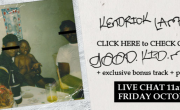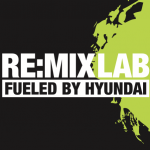Hauke Scholz – a student at the Muthesius Academy of Art and Design in Kiel, Germany – is the mastermind who conceived the idea for what he is calling the MusixCube. This device is serving as Scholz’s B.A thesis project and as stated on his Behance project page,
one focus of [the MusixCube is] the idea of taking the music producers away from the computer and allowing them to take back the music into their own hands.
The MusixCube itself looks and operates like a Rubik’s Cube; colored squares, fully rotatable surfaces and all. The MusixCube is a controller, intended to work in tandem with software like Logic, Reason, ProTools or Ableton Live, among others. Additional input devices like more MIDI controllers can be used with the MusixCube as well.
Interestingly enough, aside from the physical movement for the MusixCube, like what was described in this piece on the AlphaSphere, there is also an element of touch and pressure sensitive surface manipulation; just with screens instead of pads. 40 OLEDs (organic light emitting diodes) provide a slew of options for assigning samples and effects, affected through a series of different movements. Scholz’s explanations allude to the MusixCube being capable of more individual piece adjustment beyond that of a Rubik’s cube.
Despite the limited number of surfaces, MusixCube’s high level of mixing, recording and editing control is achieved through five separate “layers” – Sampler, Options, Group, Levels, and FX. When one uses the cube, just the active top surface lights up. Various color schemes on the individual squares keep different functions identifiable while moving multiple segments. All one color is for sampling while multiple colors is for group function. Squares lit in white are designated to functional controls like deletion, recording and playback.
Each of the layers can be activated depending on the number and size of the turns (90°, full rotation, etc.). Mixing comes to life through the Bluetooth feature that can work between more than one MusixCube and whichever software is on a person’s workstation. Tracks from several cubes can also be mixed, just by placing them in close proximity to each other. Though Scholz does not specify the method to accomplish this, I wouldn’t be surprised if some type of near field communication was being explored.
Thus far, Scholz has constructed two MusixCube protoytpes. According to the information given on his Behance page, only acrylic, varnish, and polyurethane were used for the physical models but a combination of eight software programs –mostly Adobe Creative Suite, among others– went into designing and powering MusixCube’s digital abilities. Similar to the Skube, Wifi and an Arduino board are used tofor partial digital control; at least for the current prototypes.
For a work still-in-progress, the MusixCube shows lots of potential. The total package of convenience in size, artistically pleasing design, and vast blending possibilities presents onlookers with a nonconforming piece of equipment that can add an expressive dimension to the composition and recording process beyond clicking a mouse and pushing record.
Below is a short demo showing manipulations of the MusixCube.
Kira is an old school music nerd with a love for all things creative; always searching for music’s common ground. She graduated with an M.A. in Performing Arts Administration from New York University. Drop her a tweet @shadowmelody1

















Comments are closed.